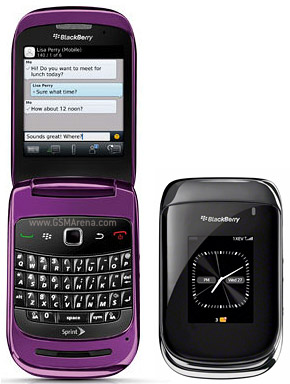Unfolding the BlackBerry Style 9670 Specs Features and More

Introduction to BlackBerry Style 9670
The BlackBerry Style 9670 was a unique entry into the smartphone market by BlackBerry, first announced in October 2010 and released in November of the same year. Unlike most BlackBerry devices known for their candy-bar design, the Style 9670 featured a clamshell, foldable design, appealing to those who favored flip phones. During a time when touchscreen smartphones were gaining immense popularity, BlackBerry attempted to offer something distinct with Style 9670, targeting users who preferred the physical QWERTY keyboard while providing modern smartphone capabilities.
Design and Build
One of the standout features of the BlackBerry Style 9670 was its compact clamshell design, measuring 96 x 60 x 18.5 mm and weighing reasonably at 131 g. The foldable format not only made it pocket-friendly but also protected the screen when closed. Upon flipping open, users were greeted with a familiar QWERTY keyboard, a signature feature of BlackBerry devices, which provided a tactile typing experience that many users appreciated. The exterior of the phone was available in Steel Grey and Royal Purple, giving it a stylish and distinctive look.
Display
Despite its clamshell design, the BlackBerry Style 9670 included an external and internal display. The device sported a TFT screen capable of 65K colors, boasting a resolution of 360 x 400 pixels. This display provided clarity and quality viewing for emails, messaging, and other functions typical for business-centric users. The external display allowed users to quickly check notifications, time, and other essential alerts without opening the device.
Performance and Hardware
The BlackBerry Style 9670 was powered by the BlackBerry OS 6.0, an upgrade over previous versions, providing a more user-friendly interface and enhanced features. Under the hood, it featured 512MB of internal storage, expandable via a dedicated microSDHC slot, with an 8 GB card included. This provided ample space for the user's essential apps and files at the time. The device supported CDMA / EVDO network technology, offering reliable connectivity with speeds reaching 3.1 Mbps on the EV-DO Rev.A.
Camera Capabilities
For photography enthusiasts, the BlackBerry Style 9670 included a 5 MP main camera with autofocus and an LED flash, capable of capturing decent quality photos for a phone from that era. It offered video recording at 480p, allowing users to capture and share moments effortlessly. However, there was no front-facing camera, reflecting its focus on functionality rather than multimedia capabilities.
Battery Life
The phone came with a removable Li-Ion 1150 mAh battery, which provided up to 264 hours of standby time and up to 4 hours and 30 minutes of talk time. It also offered up to 14 hours of music play, which was a significant advantage for users who utilized their phone for entertainment on the go. Having a removable battery also meant users could carry spares and swap them when needed, a convenience that many modern smartphones lack.
Connectivity and Other Features
Connectivity options on the BlackBerry Style 9670 included Wi-Fi 802.11 b/g/n for internet access, Bluetooth 2.1 with A2DP for wireless audio and file transfers, and GPS with A-GPS for navigation purposes. Unfortunately, the device lacked an FM radio but compensated with a microUSB 2.0 port for wired connections and charging.
The device supported HTML browsing, allowing users easy access to web content. While modern browsing needs might surpass its capabilities, for its time, it provided a feasible mobile web experience.
Market Position and Legacy
At its release, the BlackBerry Style 9670 was priced around 50 EUR, making it accessible yet appealing to a niche audience that preferred the physical keyboard and clamshell design. However, it faced significant competition from touchscreen smartphones that were becoming increasingly popular, possibly leading to its eventual discontinuation.
While it may not have achieved groundbreaking success on the scale of other BlackBerry models, the Style 9670 remains a notable example of BlackBerry's attempts to diversify its product lineup and address varying consumer preferences. It represents a time when BlackBerry was experimenting with form factors outside their normal repertoire in an attempt to capture both traditional and modern users alike.
End of Production and Collector's Value
The BlackBerry Style 9670 was eventually discontinued, making it a collector's item for fans of BlackBerry devices and unusual phone designs. While it didn't revolutionize the smartphone industry, it gave consumers an insight into BlackBerry's willingness to innovate and adapt in a rapidly shifting market.
Today, the BlackBerry Style 9670 is remembered fondly by those who appreciated its unique design and functional capabilities, and serves as a nostalgic reminder of BlackBerry's diverse offerings during their prime.
Key Features of BlackBerry Style 9670
- QWERTY Keyboard for efficient typing
- 5 MP main camera with autofocus and LED flash
- Wi-Fi 802.11 b/g/n support for fast wireless internet
- Bluetooth 2.1 with A2DP for wireless audio
- GPS and A-GPS for navigation and location tracking
- Expandable storage with microSDHC card slot, 8 GB card included
- Compact and stylish flip design
- Runs on BlackBerry OS 6.0 for familiar Blackberry experience
- Removable Li-Ion 1150 mAh battery offering up to 264 hours of standby time
Disadvantages of BlackBerry Style 9670
- No front (selfie) camera.
- Video recording limited to 480p, which is low by today's standards.
- Limited internal memory at 512MB, which may require frequent management of storage space.
- The display supports only 65K colors, which may affect the quality of the visual experience.
- The battery capacity is relatively low at 1150 mAh, providing limited talk time and stand-by time.
- Device is discontinued, meaning no official support or updates are available.
- No FM radio support.
- Uses the outdated BlackBerry OS 6.0, which lacks compatibility with many newer applications and services.

View Also
More Phones
All Rights Reserved +14266 Phones © Mobilawy 2025

























